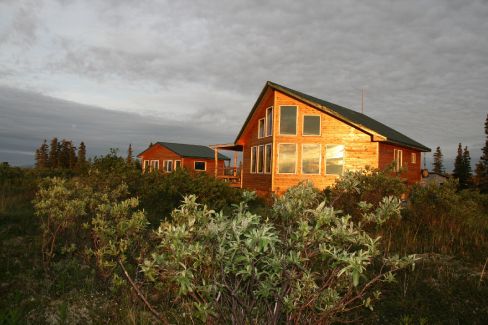From high alpine creeks where the finesse of a three-weight is all you need to the major river drainages where throwing giant streamers with seven-weights is the name of the game, Colorado is a great place to experience fly fishingIf you are new to the state, or thinking about coming for a visit, here are four trout classics located in Central Colorado to get you oriented—and excited.
The Arkansas River
The Arkansas River begins high in Colorado’s Rocky Mountains, just above the historic mining town of Leadville situated at 10,152 feet. It’s home to an array of rainbow and brown trout and the river seems to be getting better and better over time. It boasts roughly 117 miles of fishable water (depending on who’s counting).
This river can be broken down into two sections. The Freestone Section begins just below Leadville and runs through Buena Vista, Salida, all the way through Pueblo. Pueblo Reservoir is the dividing line. Below the Pueblo Dam you’ll find a fantastic year-round fisheryThe Arkansas is also the newest fishery to receive gold medal status in Colorado. According to a recent article in the Denver Post by Scott Willoughby, “After years of efforts to repair the impacts of mining pollution from the Leadville area near the Arkansas headwaters, CPW fisheries chief Greg Gerlich announced the designation of Gold Medal Trout Water for the 102-mile reach from the confluence with the Lake Fork of the Arkansas, near Leadville, downstream to Parkdale at the U.S. 50 bridge crossing above the Royal Gorge. The newest addition to the Gold Medal registry is easily the state's longest, constituting nearly a third of Colorado's 322 Gold Medal river miles in a single segment.”
To explore the Arkansas with an expert, talk to the guides at Royal Gorge Anglers, who provide an array of fly fishing guiding services on the Arkansas River. Are you are more of a do-it-yourself angler? Here is a detailed map to get your bearings.
The Colorado River
The Colorado River is the predominant artery of the Southwest United States—making its way from the heights of Rocky Mountain National Park (RMNP) all the way into Mexico. It’s also one of Colorado’s fly-fishing crown jewels and its namesake river.
If you are thinking about tackling the Colorado, be prepared to cover a lot of ground and diverse water. The Colorado can be divided into three fairly distinct sections from a fly-fishing perspective. The Upper Colorado begins high in RMNP before flowing out through the reservoir system in Grand County (Grand Lake, Shadow Mountain Reservoir, and Lake Granby). From there it moves through Windy Gap Reservoir and past the towns of Hot Sulpher Springs, Parshall, and Kremmling. This upper section offers some great walk/wading and easy access options to explore.
From there, the Colorado plunges through Gore Canyon after taking in the Blue River near Kremmling. Access to Gore Canyon is extremely tough and it is not a favorite among fly anglers. Hardcore kayakers? That’s a different story. Here the river changes from a walk/wade fishery to one with great options to float in a raft or drift boat. From the Pumphouse put-in all the way through the Dotsero there are a number of great float trips at varied degrees of difficulty from a rowing perspective. In addition to easy to find put-ins and take-outs on public land, there is also great access for wade fishing throughout this middle section.
Most anglers consider the Lower Section of the Colorado to run from Dotsero and the confluence with the Eagle River all the way to New Castle and beyond. This stretch has roughly 30 miles of riverbank and many wading and floating options with significant stretches of public access.
The Colorado River offers extensive do-it-yourself options but if you would like to float the river (or take a shot on the Eagle or Roaring Fork Rivers—smaller tributaries) with a guide service, talk to the guys at Vail Valley Anglers.
The South Platte River
The South Platte River is one of the easiest rivers to access in Central Colorado, especially for those flying into the Denver International Airport. The South Platte is also the closest river with Gold Medal designation to the Mile High City.
The South Platte begins in the high country surrounding the South Park basin, where numerous small creeks and streams converge and travel eastward. The river runs through a number of canyons and reservoir systems used to convey water from the mountains to the Eastern Plains and beyond.
The first major canyon this river cuts through is Eleven Mile followed by Cheesman Canyon and Waterton Canyon. Each of these waterways is connected by a large reservoir. And these impoundments are part of what make the entire South Platte system a fantastic year-round tailwater fishery. Sections below Spinney Reservoir, Eleven Mile, and Cheesman Canyon are all renowned Colorado trout fishing classics.
As always, with the attention and renown, and close proximity to a major metropolitan area, comes fishing pressure. Be prepared for technical conditions and crowds in the summer months. And look for solitude on the South Platte River in the winter or shoulder months. These fish are as smart as they come, so bring your A-Game. Explore the South Platte River with the knowledgeable and experienced guide staff at Trouts Fly Fishing and Guide Service located in Denver.These four rivers are just the tip of the iceberg when it comes to fly fishing in Colorado. All you need is a gazetteer, full tank of gas, and a vivid imagination to explore the amazingly fun and diverse fishing options this state offers.














